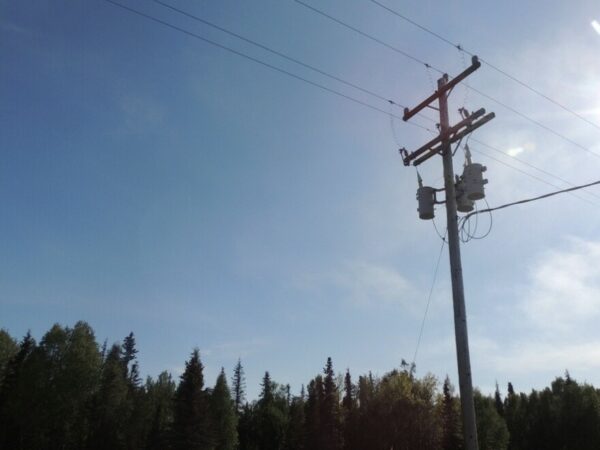
A plan to upgrade electrical transmission lines from Fairbanks to Homer could pave the way for more renewable energy transmission on the Railbelt.
That’s according to Curtis Thayer. He’s executive director of the Alaska Energy Authority, a public corporation of the state.
AEA and five Railbelt utilities announced Wednesday at the Alaska Sustainable Energy Conference that they’re embarking on $200 million worth of upgrades to existing transmission lines.
“This is probably the largest infrastructure upgrade in 30 years on the Railbelt,” Thayer said. “And for all the utilities to be united and it not costing ratepayers additional money and not costing the state treasury — that’s a win-win.
Transmission lines carry electricity from one point to another on an electrical grid.
Thayer said most lines on the Railbelt are owned by AEA. Others are owned by the utilities themselves. And they’re all getting old — many have not been updated in decades.
That’s a problem, in part, because aging transmission lines can lead to blackouts. Chugach Electric Association has already been working to reconstruct transmission lines in Cooper Landing, for example, which it said will help with frequent outages there.
Thayer said it’s also important that transmission lines are in good shape as momentum for renewable energy projects in Southcentral grows — like the plan to build a 60,000-panel solar farm in Sterling.
“Today, we cannot transport that power to Anchorage or Mat-Su or Fairbanks because the transmission capacity isn’t there,” Thayer said. “So we have to update our transmission lines, and this is the first step to doing it.”
The project will be funded by the utilities’ excess bond payments for the Bradley Lake Project. That’s the 120-megawatt hydropower project on the other side of Kachemak Bay from Fritz Creek. The utilities finished paying off the bonds for that project last year.
That project supplies power to all the Railbelt’s utilities. And it’s poised now to expand as the Dixon Glacier nearby recedes and releases more water to be harnessed. Thayer said it’s another project that stands to benefit from better transmission infrastructure.




